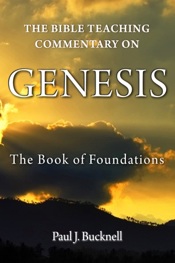Genesis 10-11 Unity & Diversity – The Bible Teaching Commentary
Paul Bucknell
Introduction: Unity & Diversity: Noah's SonsGenesis 10 and 11 enable us to jump ahead in our understanding of the development of the nations. They not only enable us to trace Abraham’s line back to Noah’s godly line but also to discover the keys to understanding our modern society’s linguistic and societal groups.Objectives• Show the connection between the ancient and modern worlds through genealogical records.
When we distance ourselves from the world revealed in the scriptures, we tend to distance ourselves from God and His great plan. We might think, "God lived in the ancient world but is not relevant to our own age with modern economies, web connections, educational systems, United Nations, and pollution problems." Genesis 10-11 bridges the gap between the ancient and the modern worlds.Chapters 10 and 11 of Genesis do this through successive genealogies and careful explanations of ‘modern’ phenomena such as the diversity that derives from the multiethnic societies and multitude of languages. Why is this so important? Secularism is dependent on a disconnect from the ancient past. If people realized that we share roots in common with those mentioned in the scriptures, then they would have to face the God who designed and made them. They would see God’s place in history. History is being driven to accomplish God’s work rather than as the secularists demand that religion is a development along with ignorant men. They developed these religions in fear.
We should add that no where else do we find anything like this knowledge being revealed here in God’s Word. It is absolutely fantastic to discover these links here in God’s Word written thousands of years ago. Ancient cultures never could look beyond their own culture. They would always brag of their accomplishments and speak excessively of them. Only in God’s Word do we find this detailed and yet honest revelation of the history of the world. God wants to link our modern generation to the ancient world for it is only then can we gain a full understanding of the Lord of history and His purposes among mankind. A.
|
|||||||||
 |
|
|
The genealogy takes a bit different course here. Chapter 10 does not record dates. We find no information of how old Shem, Ham and Japheth are. We only know about Shem’s line from Genesis 11. This is the way to show that God was only concerned in thoroughly tracing the line from which the Messiah would be born. God is showing how He is fulfilling His promise first made in Genesis 3:15. This genealogical trick was also done during the time of the forming of Israel. Only Levite’s line was shown to continue (Exodus 6).
Here we find the descendants of Noah from Genesis 10. Sixteen grandsons can be traced down into the different parts of the world where they went. Genesis 10 shows that the world is linked up to what God is doing in history. They want to put aside all religions as myth, but Noah’s ark and this genealogical record of Genesis 10 presents such a startling perspective of how we are all linked together, secularism is scared to face the facts. They want an old earth rather than thinking the earth has only entered the 7th millennium.
The genealogy of chapter 10 shows how all the people of the world derived from these three sons of Noah: Japheth, Ham and Shem. Shem's generations are expanded in chapter 11.
Reflections
What millennium do you live in? We now live around the beginning of the seventh millenium. Jesus was born around the fourth. Do you sense the spread of wickedness?
A. Genealogies: Diversity through Noah's Sons
Genealogies: Diversity through Noah's Sons
We need to get a perspective on how the world became so diverse. The scriptures unlock this mystery by revealing us the creation and spread of cultures through Noah's sixteen grandsons. On can note this through the chart below.

JAPHETHGomer Magog Madai Javan Tubal Meshech Tiras |
HAMCush Mizraim Put Canaan |
SHEMElam Asshur Arpachshad Lud Aram |
BFF Homepage | Top | Back | Bible Topics | Genesis | Next | Assignment
Biblical Foundations for Freedom



 when God’s grace begins to pour into our lives.
when God’s grace begins to pour into our lives.
